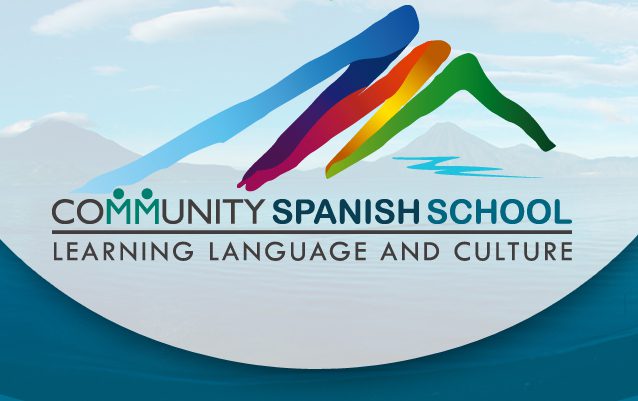
Learning Spanish at the Community Spanish School – A How To Guide
Readers of our blog probably know by now that we attended a Spanish language school in August to help level up our communication skills. Now that we have finished classes and have had time to process everything, we wanted to describe our time with our chosen institution, the Community Spanish School (Facebook link).
But I’m sure you want details!
We’ll show you how we enrolled and what our experiences were like!
Learning Spanish at the Community Spanish School: A How-To Guide
- Why Go To Spanish Language School?
- Why Did We Choose The Community Spanish School?
- Costs and the Registration Process
- How Did We Get To San Pedro And Our Homestay Family?
- The Community Spanish School Campus
- Our Monday – Friday Schedule
- What Were Classes Like? What Did We Learn?
- What Were The Cultural Exchange Activities Like?
- Goodbye To The Community Spanish School
- So Where Do Our Studies Go From Here?
Why Go To Spanish Language School?
When we committed to touring Latin America for the first year of our global travel journey, we knew we’d have to get Spanish language training. You really won’t be able to function in Latin America without some sort of Spanish language proficiency, unless you stick to party hostels and expensive resorts in stereotypical tourist locations where everyone speaks English.
And we aren’t really the types who enjoy party hostels and expensive resorts. Immersing ourselves as best as we can in the local culture has always been more appealing.
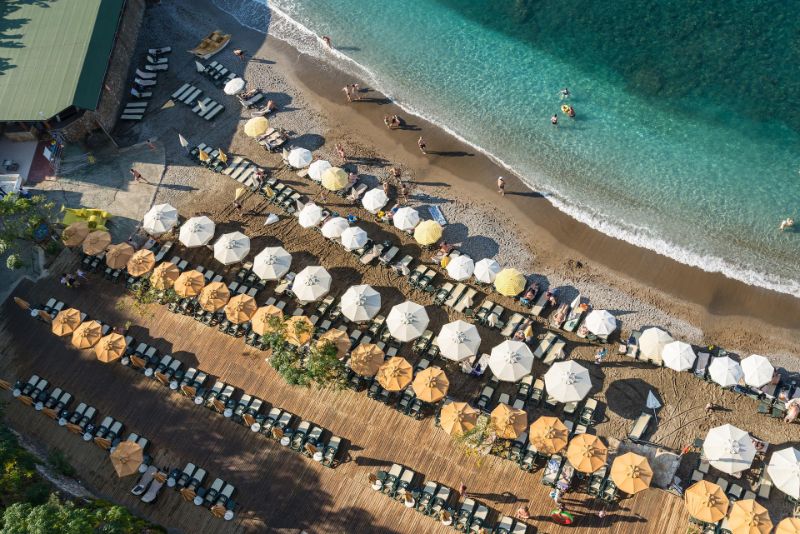
The problem was, our last experience with the Spanish language was about 35 years ago! So needless to say we needed to be schooled in the foundations of the language again.
Why Did We Choose The Community Spanish School?
We discovered the Community Spanish School (Facebook link) during our internet research for language school options in the Lake Atitlan region of Guatemala. The many 5-star Google reviews and supportive blog posts by fellow travelers convinced us to roll the dice and register for classes.
The limited number of online images of the new Community Spanish School campus suggested that it was gorgeous, and the rates for tuition were extremely reasonable.
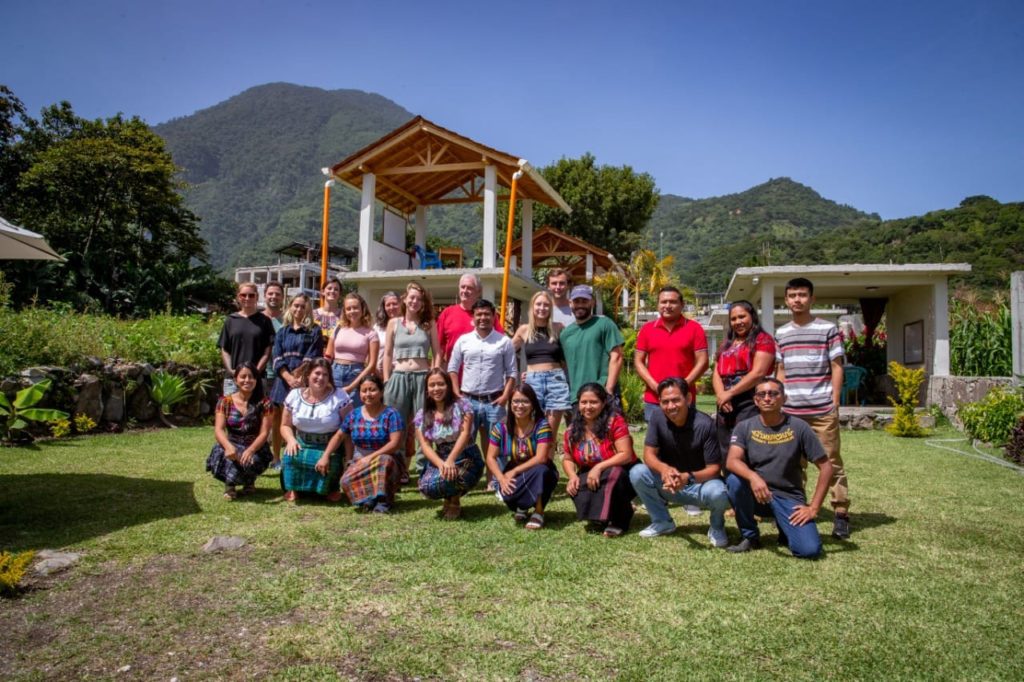
But most of all we liked that a percentage of the tuition and registration fee goes back to projects that support the community.
In particular, many of the projects that the Community Spanish School supports involve furthering the educational opportunities for children and adolescents in the San Pedro area. Some hurdles that families face include having inadequate income to purchase supplies that allow children to attend classes (books, uniforms, paper, pens, etc.), and an inadequate number of public schools to support the local population.
Simply put, there are not enough seats in the free public schools beyond the grade school level to meet the needs of the local population. So many families are forced to pay to send their kids to private school, which financially is not an option for many.
Another benefit of learning Spanish in the Lake Atitlan area is that Spanish is not the native language in the area. Various Mayan dialects are the primary language, with Spanish being a secondary language for most. Now, this may not seem like an advantage, but for new language learners, it is a real luxury.
This means that when you talk to natives their rate of speech tends to be slower when using Spanish, and their sentence structures tend to be easier to understand grammatically. So you can have easier conversation experiences here than in a part of the world where Spanish is spoken in a more rapid-fire way. In other words, it is a great place to practice with the locals.
Costs and the Registration Process
Costs for tuition are broken down on the Community Spanish School pricing page. We selected the 2-on-1 option for 4 weeks, for 6 hours each weekday.
At the time of our booking (March 2022), tuition at this level was 1920 quetzales/week. So for 4 weeks, our total tuition cost came to 7680 quetzales/$1,019.96 USD.
The Community Spanish School also offers a homestay option with a local family, which we strongly recommend, to maximize your immersion opportunities. Room and board costs for 1 student are found on the Community Spanish School homestay page and vary based on whether you have a private bathroom or not. Included are 3 meals per day every day but Sunday, when all homestay families take a break.
Couples can use this option too, and we met several that did while we attended classes. Costs go up proportionally, with our room and board for 4 weeks (in a room with a private bathroom) totaling 6320 quetzales/$814.66 USD.
Little did we know at the time, but this was a really great deal!
You can read about our homestay experience at La Casa de Rosa HERE!
Registration was simple. Although there is a registration page on their website, it didn’t really function well when we tried to use it. So we just emailed the school using the information listed on their Contact page.
They responded quickly and confirmed that our desired dates were available. And then after paying a modest registration fee (which goes back to help the community), our classes and homestay dates were locked in.
Easy.
And we paid in cash (quetzales) on-site in weekly installments, which is the best way to go. ATMs are present in San Pedro.
The Community Spanish School also sends follow-up Google surveys to determine any special needs, as well as to get a sense of why you are taking classes and what level you are.
Needless to say, we freely admitted our non-existent skill level to avoid future problems.
But we hit Duolingo as hard as we could in the months leading up to our departure to give us something to work with when we arrived. We strongly recommend getting some familiarity with the Spanish language before arrival, and in the age of the internet, this is easy to do.
How Did We Get To San Pedro And Our Homestay Family?
We arranged this through the Community Spanish School. They booked a shuttle from Guatemala City that picked us up in front of our Airbnb for $30 USD per person.
Now that we have experience in the country and know how things work, we could arrange this all ourselves. But the fire-and-forget nature of the shuttle booking was extremely appreciated at the time, as we were so new to Guatemala and brain fried from our international flight.
You can read all about our shuttle experience here! And we’ll be talking about our homestay in more detail in our next post.
The Community Spanish School Campus
The Community Spanish School campus is gorgeous! We’ve only briefly described it in past posts.
Here is a photographic tour of the campus grounds:

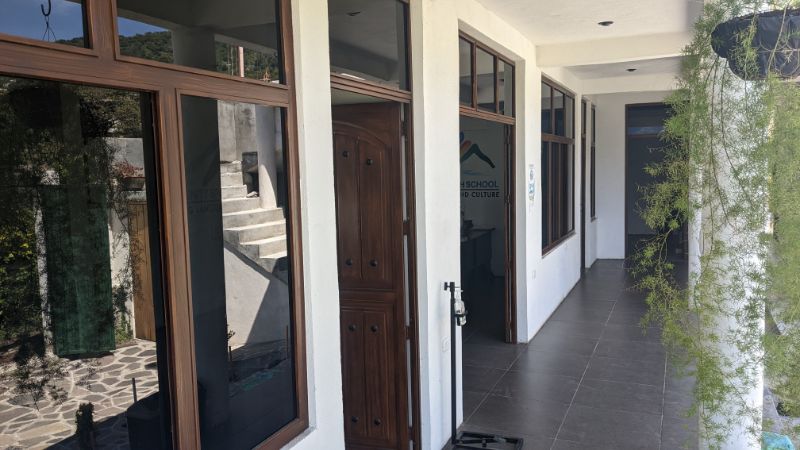
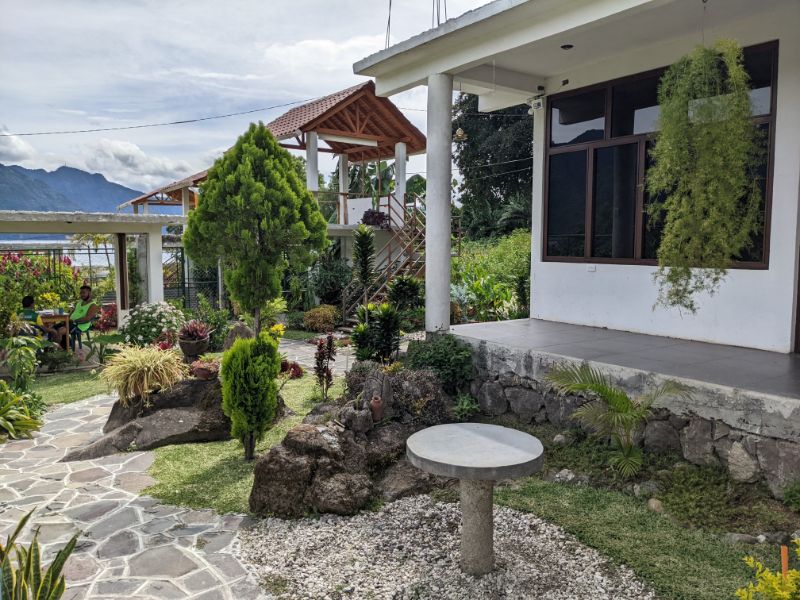


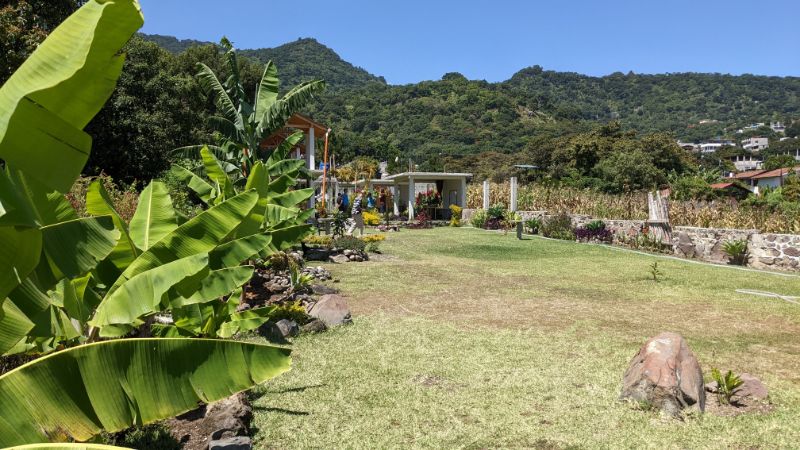
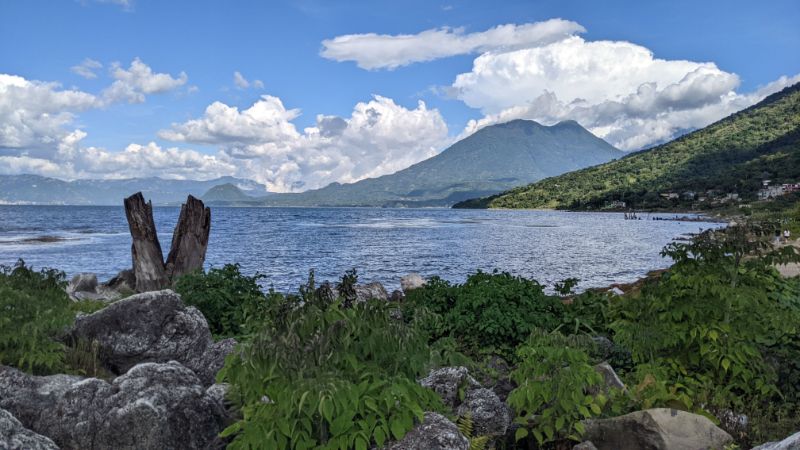
Our Monday – Friday Schedule
Our schedule was extremely busy, with no time to be bored!
But we chose 6 hours of classes per day. More sane students choose 4 hours per day.
Here is a typical day:
- 7:15 – 8:00 am– Breakfast at our homestay
- 8:00 – 11 am – Morning Classes
- Coffee and potable water are provided for free, as are locally made snacks during break sessions
- 11 am – 12:30 pm – Free time to explore, do errands, or review
- 12:30 – 1:15 pm – Lunch at our homestay
- 1:15 – 2:00 pm – Free time to explore, do errands, or review
- 2:00 – 5:00 pm – Afternoon Classes
- Again, coffee and potable water are provided for free, as are locally made snacks during break sessions
- 5:00 – 6:00 pm – Free time OR cultural exchange activity
- On Tuesday, Wednesday, and Thursday instructors set up cultural exchange activities that highlight the skills of the local residents, their businesses, and indigenous people. All at no additional cost.
- 6:15 – 7:00 pm – Dinner at our homestay
And here are examples of the snacks offered every day during morning and afternoon breaks:
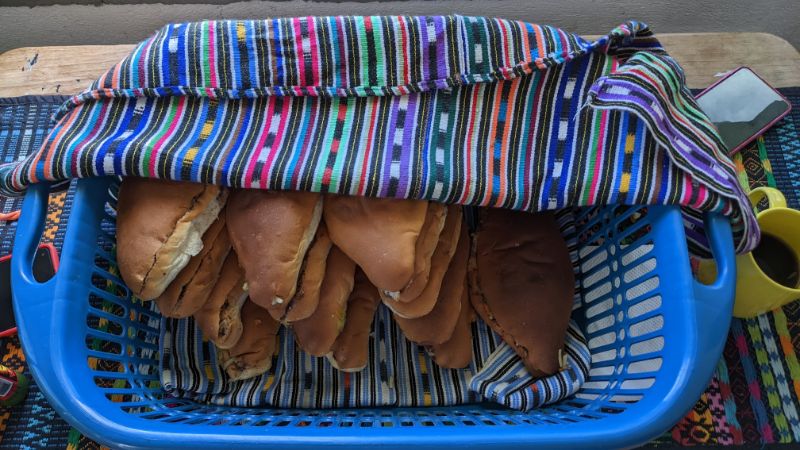
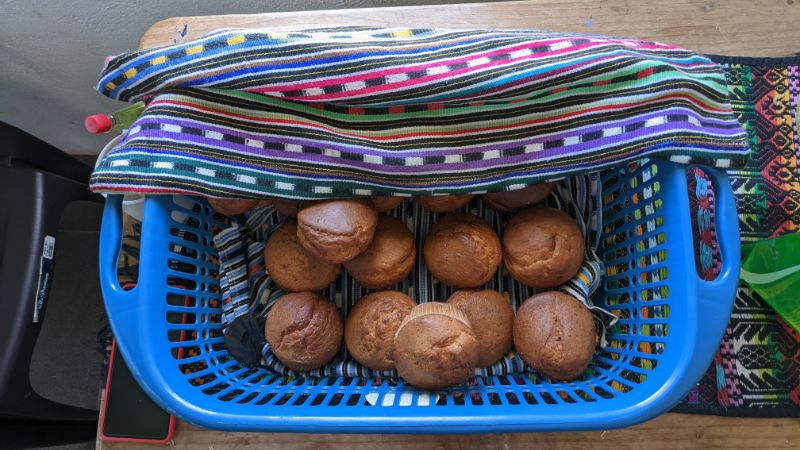
What Were Classes Like? What Did We Learn?
Basically, the entire month of classes was spent getting familiar with the basic foundation of the Spanish language. It was on this we would expand our grammar and vocabulary once we were on our own.
Our instructor, Francisco Sajquiy González, was fantastic!
He also acts as the Director of Cultural Activities at the school, which wasn’t surprising as he is a guide (guía, in Spanish) as a side job. He also holds the equivalent of a Master’s Degree in Education.
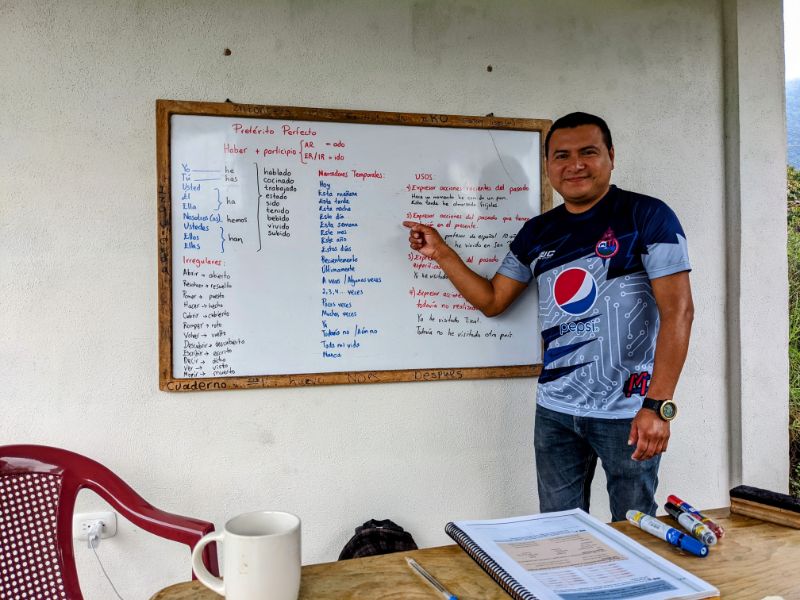
Francisco has a devilish sense of humor that was perfect for us, and made our daily grind of 6 hour lessons a lot of fun.
Our very first class was spent taking a test to gauge our level (low, it turns out) and getting to know each other better. Then we jumped right into the language.
Francisco was extremely patient with us and used a wide range of pedagogical techniques to help get the Spanish language into our bones. All language learning modalities were explored: speaking, writing, listening, and reading.
So what did we cover over 4 weeks?
A ton and we are still processing everything.
Here’s the list of major topics:
- Uses of the verb llamarse (= to be called)
- Uses of the verb tener (= to have)
- Key basic expressions
- Numbers
- Uses of the verbs ser and estar (= to be, in both cases)
- Describing people, places, and things using different adjectives
- How to express tiempo (= time)
- Uses of the verb hacer (= to do)
- Describing relationships between people and things
- Describing locations of people and objects
- Uses of the verb hay (= there is/are)
- Uses and conjugations of the most common regular verbs
- Forming and answering interrogative questions
- Uses of the verb querer (= to want) + nouns to express wanting something
- Uses of the verb querer + unconjugated verbs to express wanting to do something (= wishes)
- Uses of the verb necesitar (= to need) + nouns to express needing something
- Uses of the verb necesitar + unconjugated verbs to express needing to do something
- Uses of the verb preferir (= to prefer) with both nouns and unconjugated verbs to express a preference
- Uses of the verb poder (= to be able/can I/can you) to express permission and abilities
- Uses of the verb ir (= to go) to express direction
- Comparing things (= more than/less than/better than/worse than/same as)
- Uses of the verb ir + a + infinitive verbs to express doing something in the future
- Seasons, months, weeks, days of the week
- Uses and conjugations of the most common irregular verbs
- Uses and conjugations of the most common reflexive verbs
- Expressing what you do normally and with what frequency
- Uses of the verb gustar (= to like) to express liking something or doing something
- Using the present progressive tense for doing something (= walking, looking, etc.) using estar + gerund form of verbs
- Proper uses of good/bad as adverbs and adjectives
- Using present perfect tense for verbs to describe very recent past actions
- Expressions of past times that connect to the current in some way
- A massive list of practical vocabulary
- And all sorts of Spanish odds and ends not worthy of individual mention
We were pretty exhausted after 1 month! But now we have a solid foundation on which to practice and build our language skills.

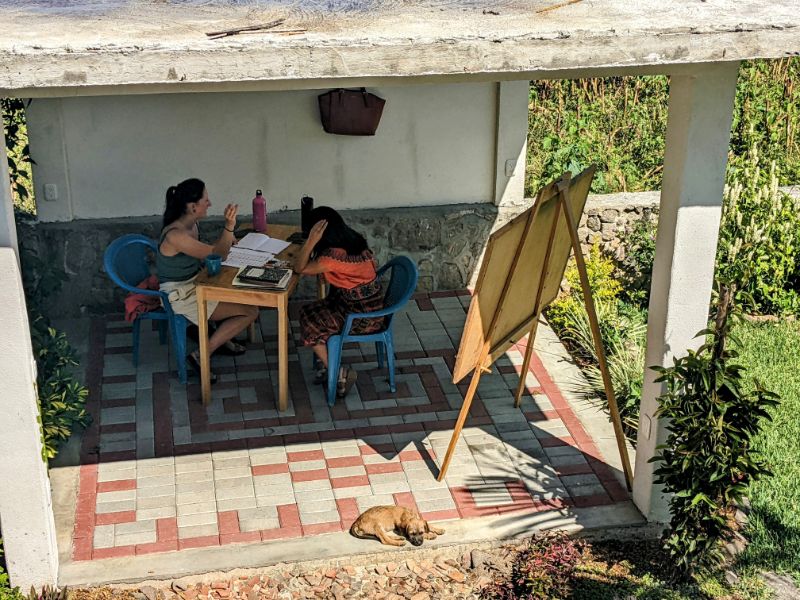
Last, one of the great things about the Community Spanish School is that they allow you to request an instructor if you wish.
With that said, we HIGHLY recommend Francisco Sajquiy González and encourage you to ask for him by name should you come to the Community Spanish School.
Alternatively, Francisco can also be messaged directly on Facebook for individual tutoring, either in person or online!
And if you are looking for a local guide, we can personally vouch for his services.
What Were The Cultural Exchange Activities Like?
One of the great unexpected extras about studying at the Community Spanish School is that every Tuesday, Wednesday, and Thursday they sponsor a free, optional cultural exchange activity for students to participate in.
The activities are varied, but all involve subjects of importance to the regional culture.
For example, we visited a local women’s cooperative of weavers who demonstrated how they make clothing using indigenous methods.
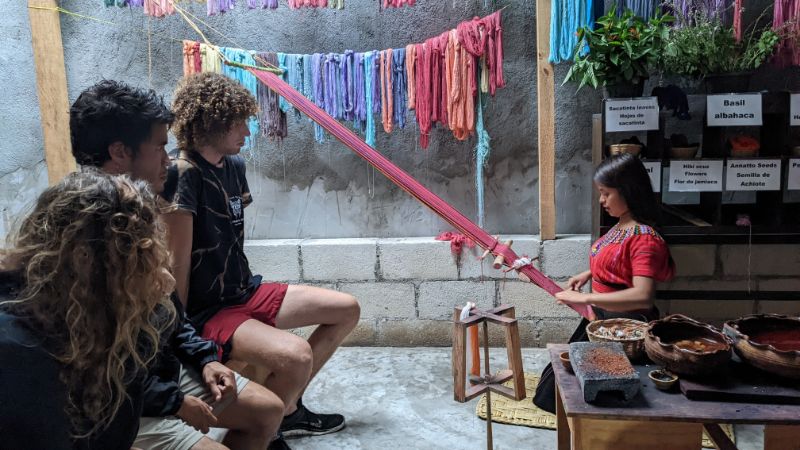
We visited a chocolate factory that demonstrated its hand-crafted organic chocolate-making techniques.
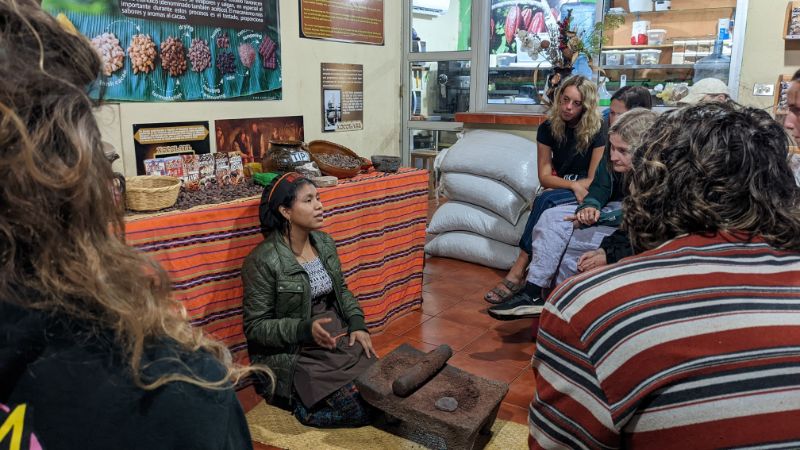
We learned how to salsa dance!
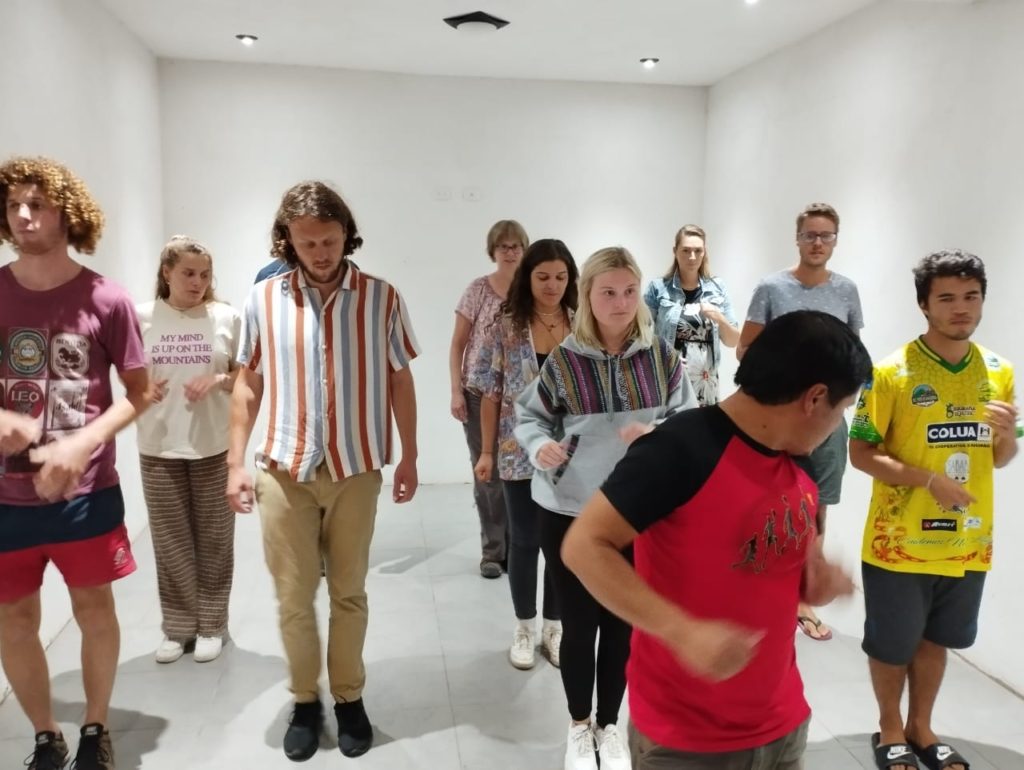
We participated in a cooking demonstration at a local household, where we learned the process by which tamales are made.
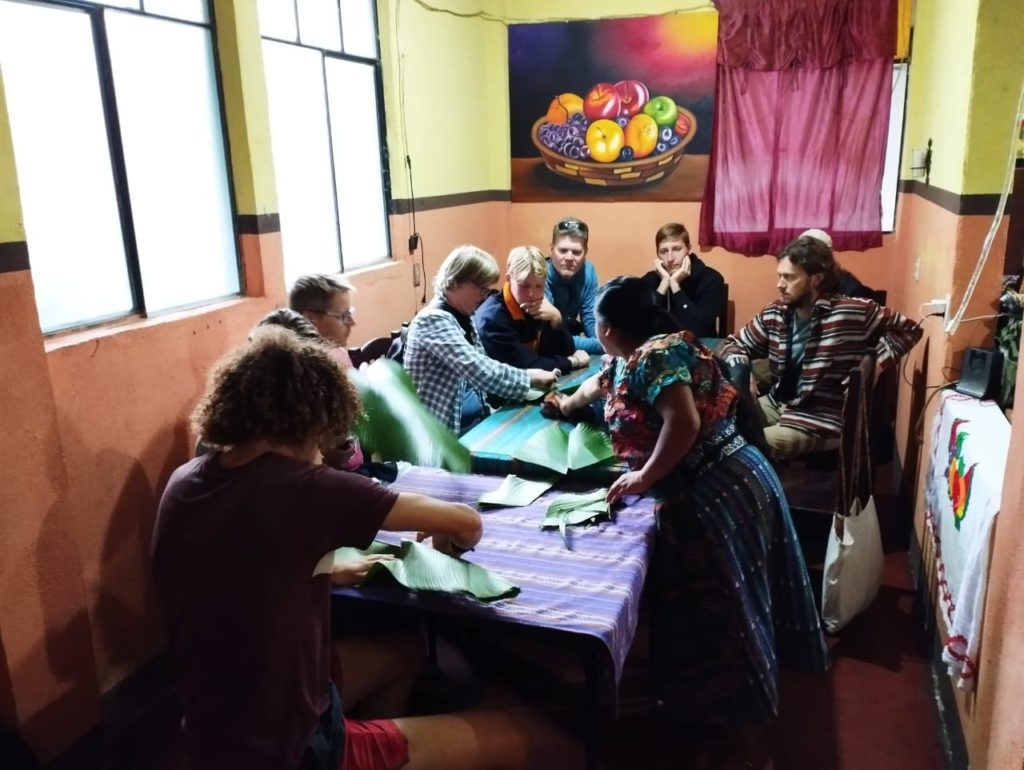

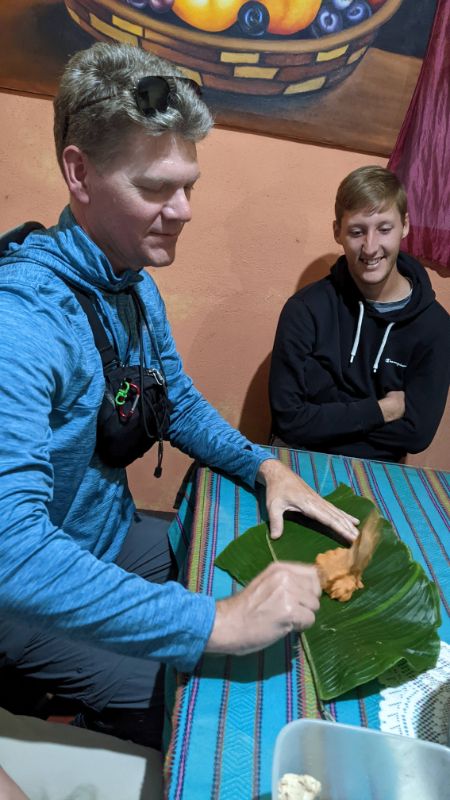
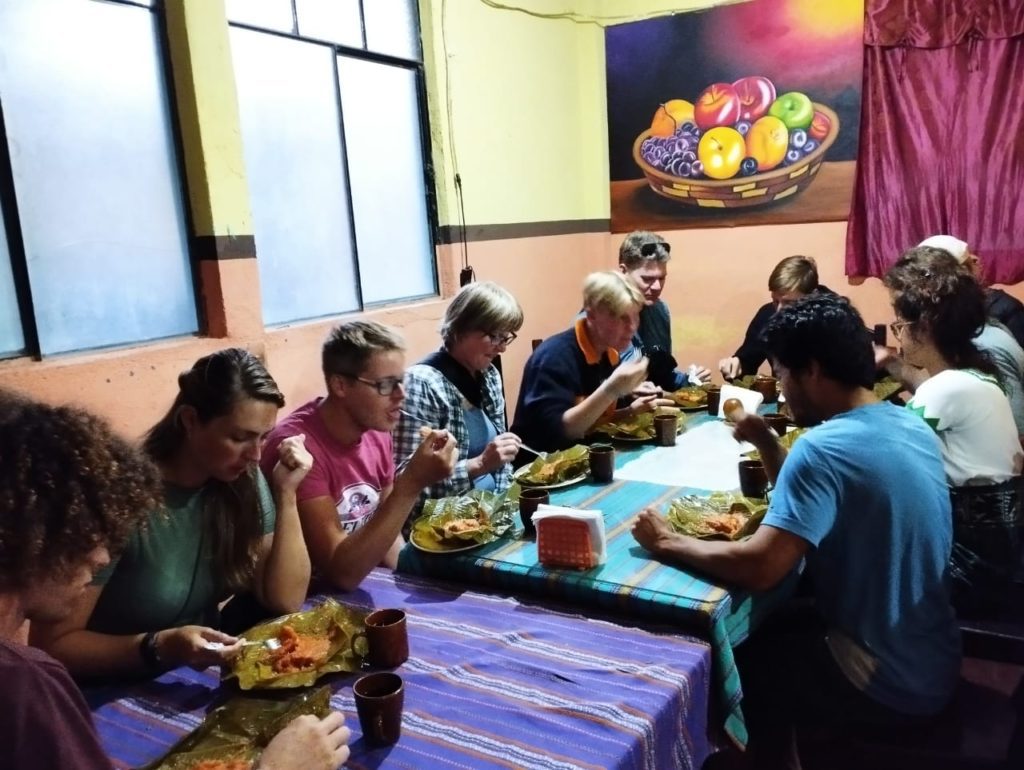
And we went into the countryside where we were taught about the crops produced in the area. Sometimes getting to the location of the activity was half the fun!

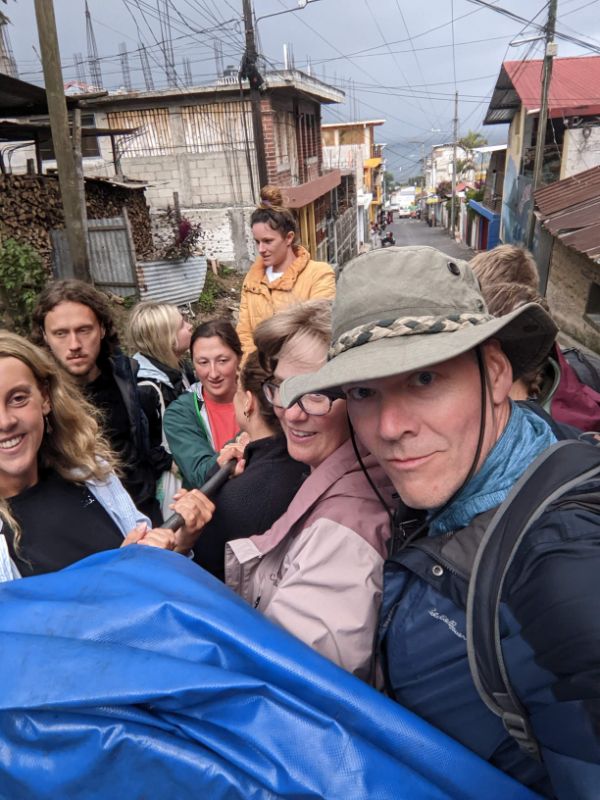
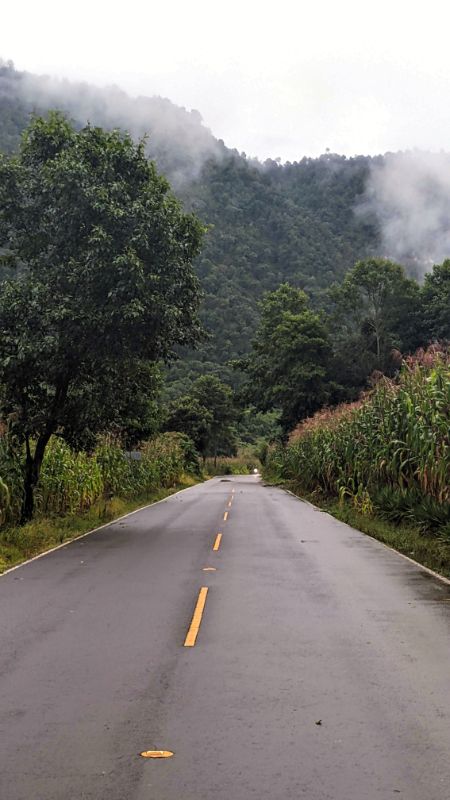
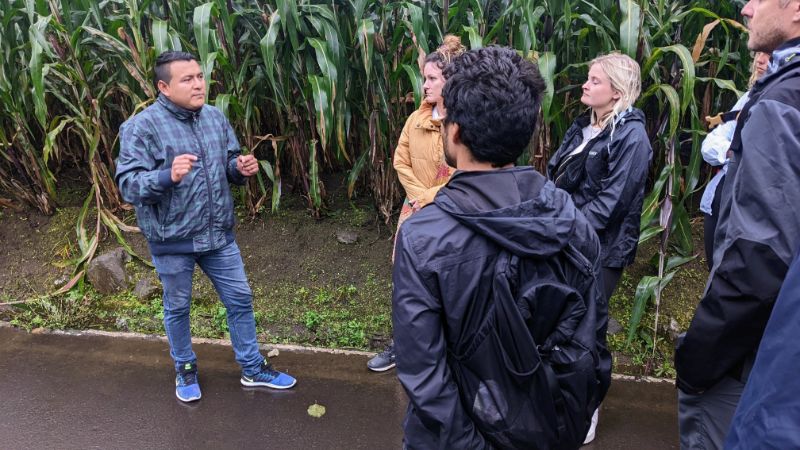
Goodbye To The Community Spanish School
After 1 month we had forged quite a few friendships among the locals and international students in attendance, so we were really sad when our final day of classes came.
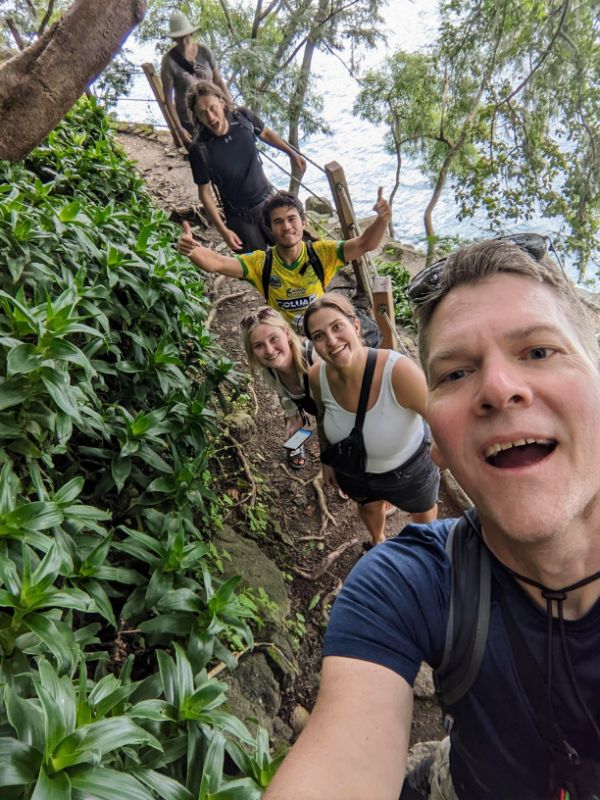
It turns out that our final day of class was the final day for quite a few other students as well! Saying goodbye was not easy.
One neat tradition at the school is that on your final day, you are encouraged to wear traditional local clothes during class! Clothes were provided by the homestay families of the students.
Sadly, being three heads taller than many of the locals, my size was not available.
But the departing students looked great!
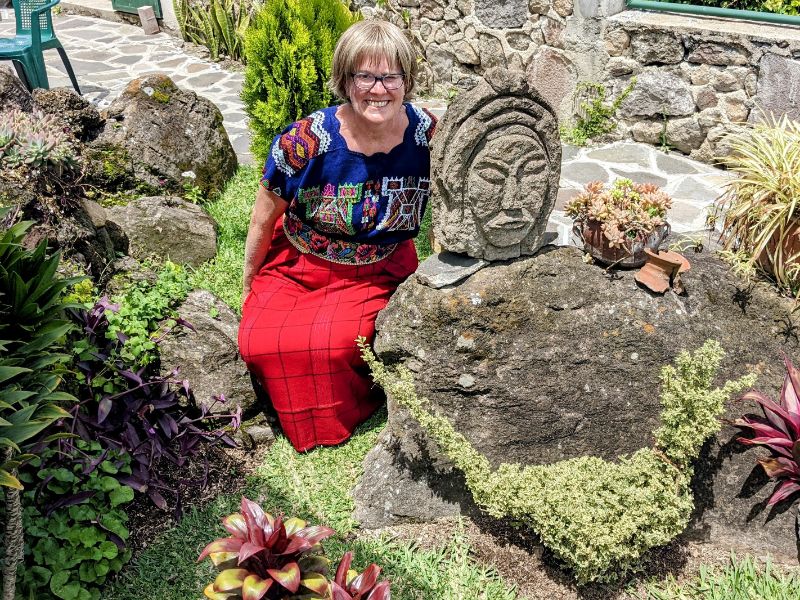

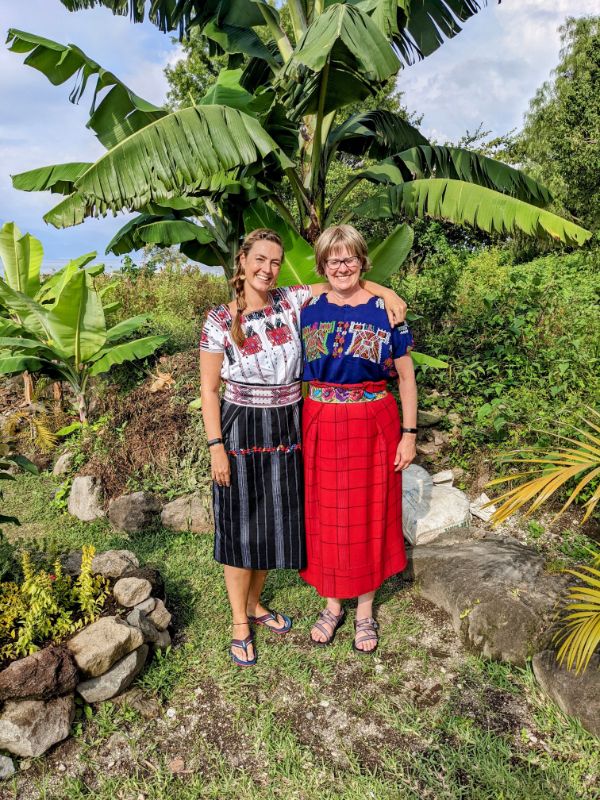
And we also had to say goodbye to our instructor Francisco, with which we developed quite a bond over the last month.


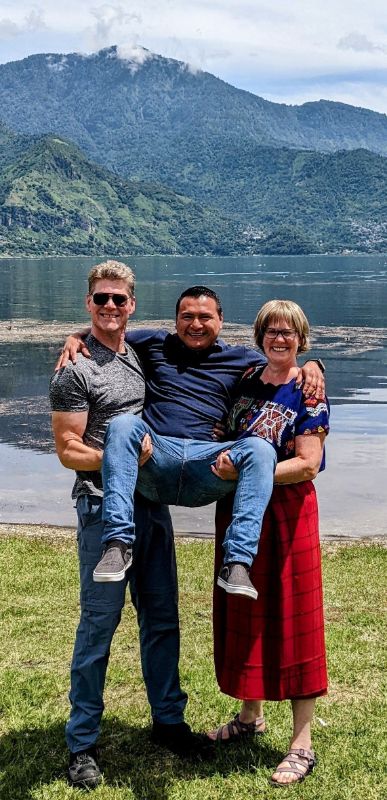
So Where Do Our Studies Go From Here?
A common question asked of us is: Are we fluent now?
No way.
Learning a new language is a type of brain reprogramming. You have to be able to train your brain to think in a different way to be able to communicate effectively.
And reprogramming your brain takes time, as well as practice in the wild, for things to sink in on an instinctive level.
One month simply isn’t enough time.
But we are much better at Spanish, can function on our own, and are in a great position to continue our language development. We feel much more comfortable communicating with the locals, even if we still have a long way to go toward fluency.
Which really was the whole point of taking classes.
But if our travels take us through the Lake Atitlan area of Guatemala in the future, we would come back to the Community Spanish School in a heartbeat.
We had a wonderful experience at the Community Spanish School! We highly recommend them as a first stop if you plan on touring Latin America.
To keep progressing with our formal studies of Spanish, we will be using audio courses to slowly improve our speaking skills (Pimsleur Spanish), textbooks to improve our grammar skills and vocabulary, and the Anki flashcard system to more quickly put all of this information into our long-term memories.
And whenever possible, we will find fun, quality, comprehensible language input using Dreaming Spanish, YouTube, YouTube music, and other sources of Spanish language audio and video online. The internet has really revolutionized language learning through self-study!
Last, please share this post (see share links below) to the preferred social media platform of your choice! We’d love for the Community Language School to get as much exposure as possible, to help support its mission.
Thank you!
Until next time…
Thanks for reading!
If our posts have saved you time, money, or are enjoyable in some other way, BUY US A COFFEE! It helps cover the costs of our blog, keeps our blog ad-free, and motivates us to continue posting about our experiences.
And leave a comment below and subscribe to get email notifications whenever we post!
Follow Two Travel Turtles on Facebook and X.

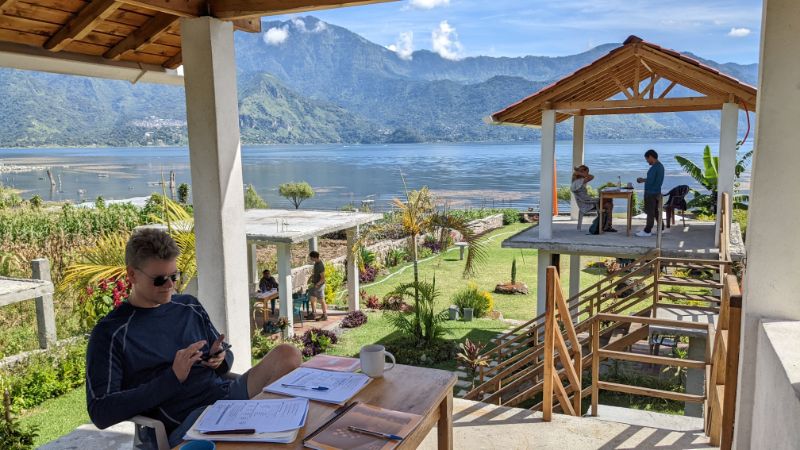
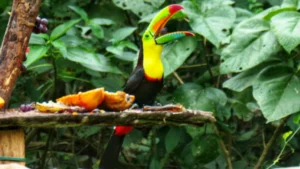

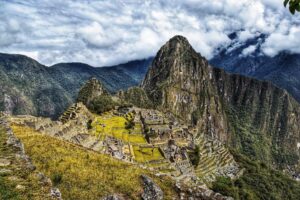
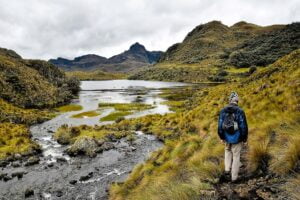
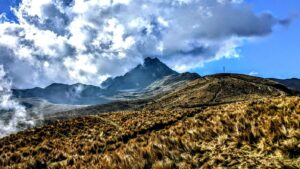

6 thoughts on “Learning Spanish at the Community Spanish School – A How To Guide”
Fascinating as usual.
Lewis and Clark should have had you along!
Thank you!
Very interesting reading about the school.
Thank you!
I’ve read that San Pedro has a strong backpacker vibe. I’m curious if you felt the city was overall very loud from a party perspective. I’m looking to go to Spanish school on Lake Atitlan and worried about getting some sleep.
San Pedro is definitely a backpacker party haven, but it is easy to escape the noise if you avoid the more notorious hostels in the more touristy part of town by the main dock. Should you decide to do a homestay, things should be reasonably quiet as those neighborhoods get little party traffic. But Guatemala is a pretty noisy place! Don’t be surprised if you hear fireworks going off at wacky hours. It’s a cultural thing commonly done when a family is celebrating some event. If you are sensitive to such things, bring earplugs just in case!